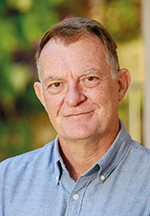

Have you ever woken up to a beautiful, bright and sunny South African day, and after drinking a cup of coffee while perusing the morning news headlines, had that distinct feeling of déjà vu? Well, this seems to be happening to me quite a lot lately. Everyday, I want to read uplifting articles but am faced with ‘bad news’ over and over again.
Is this surprising? Actually, not at all. The main reason being that good news does not sell as well as bad news. Most major news outlets distributing this news rely on readership and advertising and, unfortunately, the masses want to read the bad news. Maybe it makes their own mundane lives seem a little more acceptable, or maybe it simply gives them more to discuss when they meet up with colleagues. Whatever the reason, most headlines are not positive.
This does not translate into the fact that there is no ‘good news’, because quite frankly, if you do look hard enough (and read between the lines here and there), you will find many uplifting articles.
In South Africa, we have become used to getting news that either disappoints us, or worse, makes our blood boil. We have become desensitised, so that the delivery of bad news seems to be the norm. Of course, many individuals and organisations play directly into this by continually dropping the ball while at the same time seeming to get away with it (here’s looking at you, our SA leadership).
Our load shedding debacle does not help matters. 2022 has been the worst on record for load shedding, with over 1637 hours so far.
So, I’ll come straight out and say it. I believe that Eskom is beyond saving and will ultimately go the same route as other state-owned enterprises like SAA. The newly appointed board has been given the mandate to increase the energy availability factor to 75%. An impossible task without a major shift that will be blocked at every turn. That’s my bad news!
Now for the good news! This can be fixed. But to do this, Eskom needs to be treated the same way as a private sector company. Place it in business rescue, retrench all staff, and then employ or re-hire the ones that actually want to see the company succeed. I know this will not happen – but a guy can dream can’t he?
Instead of trying to fix a system that is beyond repair, the billions of Rands that they are asking for must rather be ploughed into renewable energy. South Africa is in the prime position to be the first country to get to ‘net zero’, and what a feather in our cap that could prove to be. We have the renewable resources – oodles of sunlight, wind- and wave-energy. There should be no excuse. Presently SA ranks 12th on the list of carbon dioxide emitters worldwide. This can and must change.
In November 2021, US, UK and the rest of the EU allocated $5,6 billion in seed money to SA. The money is meant for SA to retire its corruption- and debt-riddled fleet of coal-fired stations. It must be used to fund the thousands of workers who will lose their jobs in this process, and go towards the construction of renewable energy projects to push SA towards the goal of ‘net zero’.
And more good news is that this process has already started, with Komati Power Station hopefully becoming the flagship of this transition. The last unit will be permanently shut down this month and the station will be repurposed into a training facility for upskilling Eskom employees, and for assembling containerised solar microgrids that will be deployed across SA. The facility will be completely ‘net zero’ by generating all its renewable energy: 150 MW of solar, 70 MW of wind and 150 MW of battery storage.
Let’s all collectively hope that this process will be a huge success, so that SA can finally see a glimmer of light at the end of the tunnel, that light being a ray of sunshine instead of an oncoming freight train.
| Tel: | +27 11 543 5800 |
| Email: | [email protected] |
| www: | www.technews.co.za |
| Articles: | More information and articles about Technews Publishing |

© Technews Publishing (Pty) Ltd | All Rights Reserved